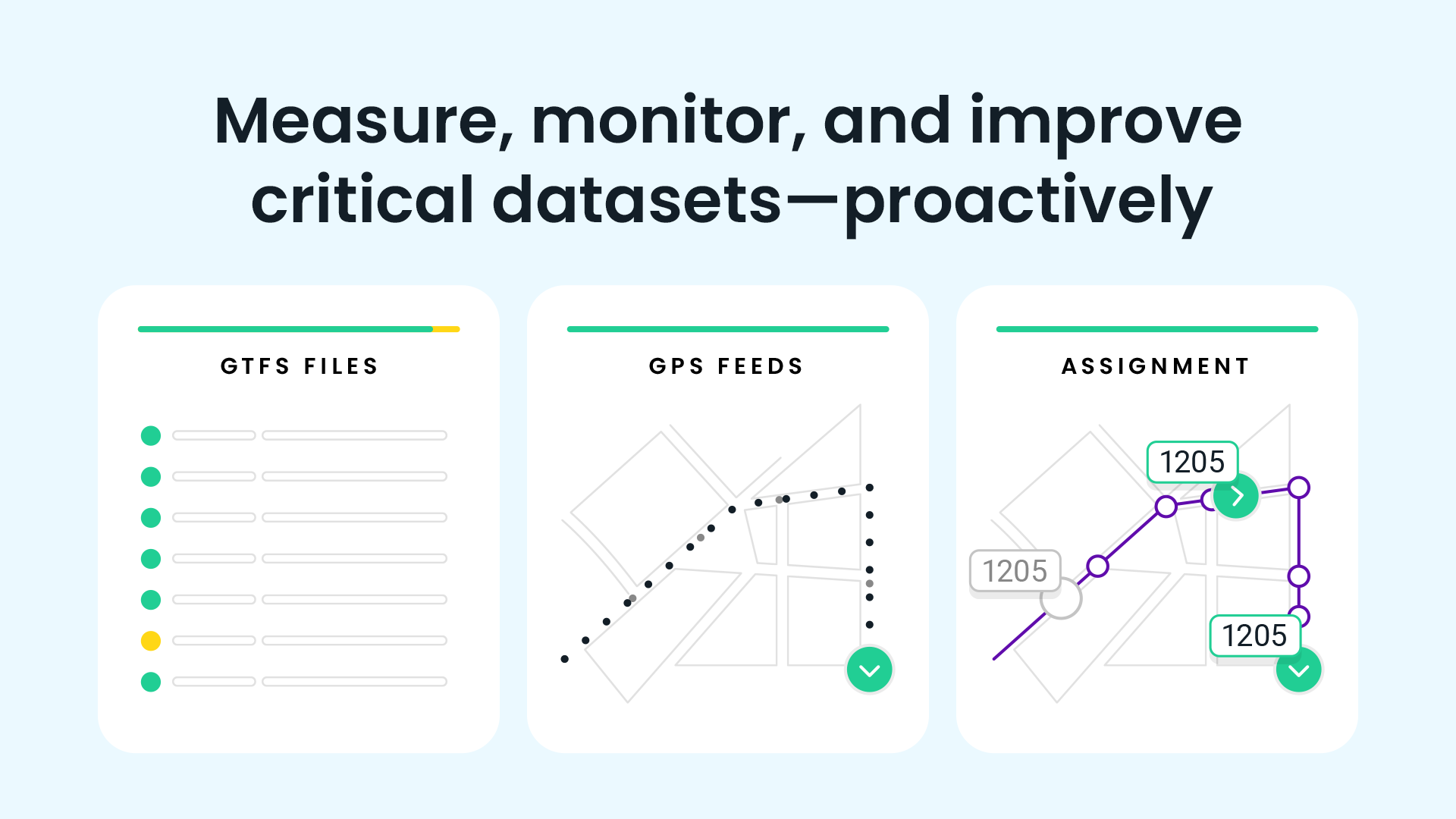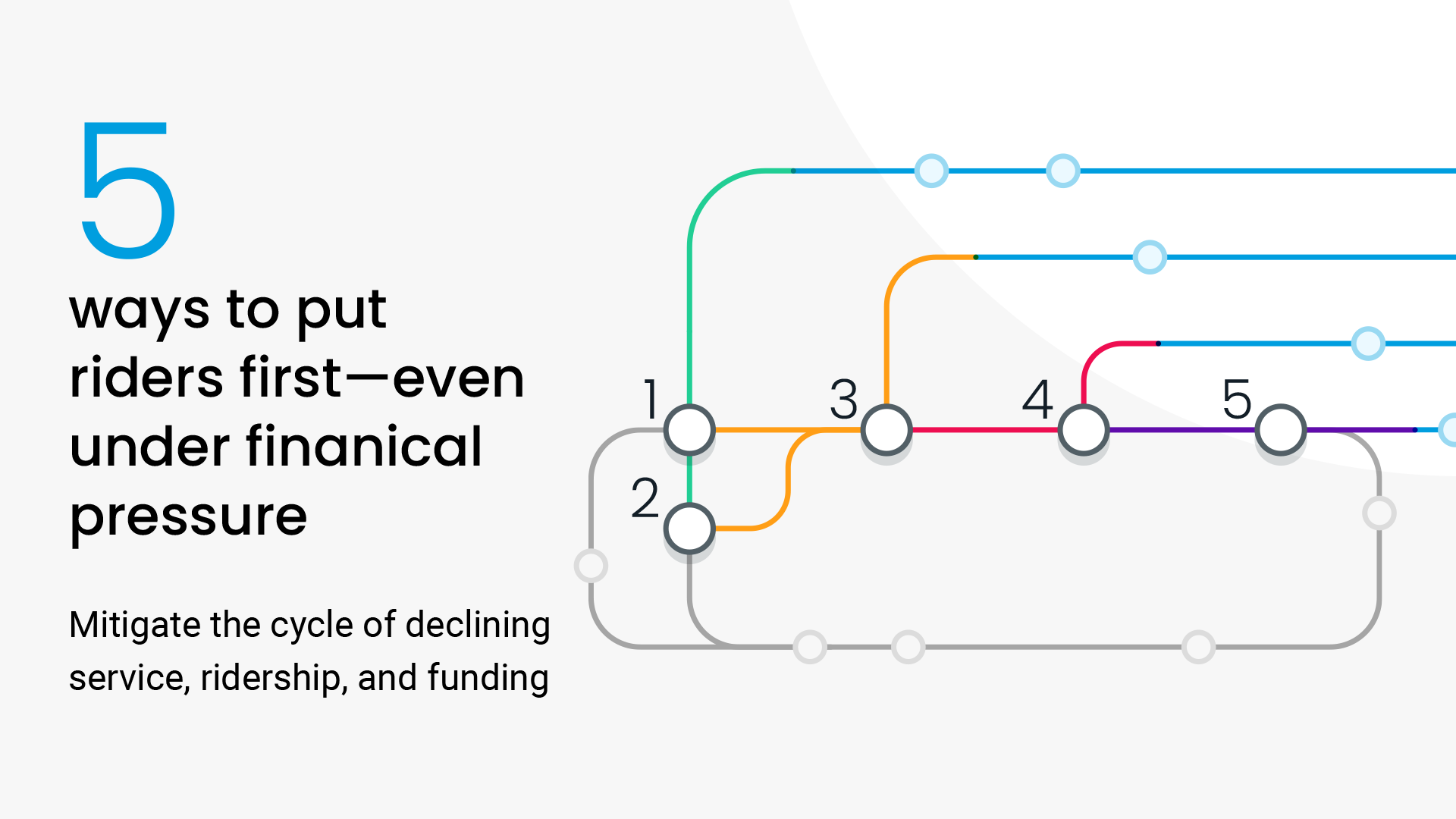
October 26, 2021
SEPTA Uses Swiftly to Power a Historic Bus Network Redesign

October 26, 2021
SEPTA Uses Swiftly to Power a Historic Bus Network Redesign
October 26, 2021
SEPTA Uses Swiftly to Power a Historic Bus Network Redesign
Executive summary
SEPTA is redesigning its bus network to address the Philadelphia region’s changing needs. The agency is taking a data-driven approach and using Swiftly to analyze where improvements to transit speed and reliability will benefit the most riders. Making big, wholesale changes will require buy-in from internal stakeholders and the public, so the agency is also using Swiftly’s reliable data to justify their plans and build consensus. SEPTA is using Swiftly to help them create a public transit network that can improve quality of life for everyone in the region.
At a glance
- SEPTA Forward: Bus Revolution will deliver a redesigned bus network that improves reliability and speed for riders and will help make public transit a more attractive solution for the residents of Philadelphia.
- SEPTA is using Swiftly to measure speed and schedule adherence, and to dig into historic data.
- The agency is using Swiftly to analyze where to make improvements that will benefit the greatest number of riders.
- Swiftly has helped SEPTA shift away from using anecdotal data and manual counts to one single source of truth.
- With Swiftly, SEPTA has a data source that internal and external stakeholders can trust.
SEPTA is redesigning their entire bus system
The Southeastern Pennsylvania Transportation Authority (SEPTA) is in the middle of an historic redesign of its entire bus network that will improve bus service throughout the region. The agency, which has seen a 10% decline in bus ridership over the last decade, is redesigning its bus network to better meet the evolving needs of the region and improve the legibility and reliability of its bus network.
“Neighborhoods have changed,” explains Dan Nemiroff, Manager of Planning Programs at SEPTA. “Some neighborhoods have gotten younger, and residents are more likely to walk a few extra blocks to the El or the Broad Street Line rather than take a bus and transfer. A lot of people that live in Center City are now empty nesters who don't commute.”
“But beyond that, I think the decline in ridership is largely because our services are just becoming less useful for people. The options are less attractive because they’re slower and less reliable, and there's more competition now,” says Nemiroff.
Nemiroff, who manages the bus network redesign project, is in charge of the project’s technical analysis and public engagement. The three-year project, SEPTA Forward: Bus Revolution, will deliver a redesigned bus network that improves efficiency and speed for riders and will help make public transit a more attractive solution for the residents of Philadelphia based on existing needs and conditions.
“SEPTA’s never done this before. We’ve never done a system redesign. A lot of our routes are high performing and are fine as is. But some of our services are duplicative, and some is just not as useful as it could be."
SEPTA is using Swiftly to analyze where to make changes
SEPTA is using Swiftly to drill down beyond the corridor level and pinpoint where changes should be made at the block and intersection level. They’re taking a data-driven approach to ensure that the redesign benefits as many riders as possible, and they’re utilizing Swiftly’s On-Time Performance and Speed Map modules to dig into the data for the bus redesign. “We wanted a more precise way of measuring speed and schedule adherence, and we wanted something that would make it easier to dig into historic data,” explains Nemiroff.
“We already had some Swiftly modules, but we got On-Time Performance and Speed Map because we knew they would be really useful not only for existing condition analysis for Bus Revolution, but also for ongoing priority work for the City of Philadelphia.”
“SEPTA has been data-starved for quite a while. For example, with ridership, we used to depend entirely on manual counts. When you rely on a manual count, you're basically saying this one count that this one person did at this one point of time is representative of what's happening all the time, which is a stretch,” says Nemiroff. “With Swiftly, we're trying to get away from that highly anecdotal way of measuring and providing information and do something that's more transparent and defensible. That's a big key to the success of this redesign: having data that’s actually robust.”
“Swiftly allows departments that are focused on performance to talk with our partners about improvements on a pretty granular level. I think this is the most important aspect of Swiftly, because not all transit priority projects are going to be full-scale BRT projects. In a city like Philadelphia, parking is sacrosanct and there are a lot of constraints from rights of way. Our opportunity to do big stuff is pretty small. Swiftly will allow us to target improvements that are appropriate and scaled. I think that’s something we’ve been missing."
“For example, we can look at a big corridor, and yeah, we already know the speed is bad on it. But Swiftly allows us to look at the corridor on a granular level to identify the intersection that’s causing all the problems. Prior to Swiftly, we’d look at a problem like that on a segment basis or using APC data, which was always measured timepoint to timepoint. But timepoints can be arbitrary. Swiftly isn’t arbitrary. Swiftly is point to point. And ultimately, operating in an environment like Philly, we have to be able to use precise data to deliver the best transit possible.”
Swiftly data will be essential for getting stakeholder buy-in
Swiftly has been key not only for analyzing where changes can be made; Nemiroff also sees Swiftly as essential for getting buy-in to make proposed changes.
“Without Swiftly, we’d still have to measure on-time performance, we’d have to measure speed, we’d have to measure ridership. But we’d have a lot less trust in what we were seeing. And that trust extends internally as well as externally. We need to be able to generate support for changes, and if we didn’t have tools like Swiftly, we couldn’t generate that support,” says Nemiroff. “Our partners, the public, they’re all aware of our data flows. And with Swiftly, we’re modernizing our data capabilities.”
“With this redesign project, we need to justify wholesale changes. The redesign is going to affect a lot of people and some people -- riders, stakeholders, etc. -- may be unhappy about it. And if you don’t have data that you trust internally, there’s going to be an impetus to pull back and prioritize what’s expedient over what’s best,” he says.
“People are going to poke holes in the plan. But if we have the data and the visuals that we can fall back on, I think it gives us more ammunition. That's not to say people will ultimately go along with the plan or be happy with what we’re recommending. But with data, we can generate support internally and externally to actually support those changes when we want to make them,” says Nemiroff.
“That's the key goal of having any type of data -- to be able to sort of explain your choices and stand behind them. Theoretically, if we’re at a public meeting and people are saying, ‘Well, that’s not true,’ or, ‘You don’t know that for sure,’ we can just pull up Swiftly. We don’t even have to put together a presentation or make a special map or anything."
"We can just pull up Swiftly and say, ‘Here it is.’ That’s a powerful thing to have at our disposal, to be able defend our plans whenever we need to,” he continues.
The Bus redesign could improve quality of life for the entire region
Buses are a critical part of Philadelphia’s transit system and an indispensable lifeline to work, school and more for many people in the region. The Bus Revolution project is an extraordinary opportunity to improve quality of life not just for existing riders, but also for the entire region.
“Generally, people will do what is easiest. And what we want to do is make transit easier. If transit is not competitive with taking a car and people have access to a car, they'll just drive,” says Nemiroff.
“When buses go faster and the schedule is more reliable and people can trust the service, then people are going to be more likely to choose public transit. And that can trigger an explosion of benefits for the entire city,” says Nemiroff. “If we make the right route changes and we improve speed and reliability, that improves people's ability to go further, faster with public transit.”
Nemiroff and his team at SEPTA see Swiftly as essential to making those improvements, and to setting off the changes that will improve public transit overall. “Swiftly allows us to get a clear and comprehensive idea for how our services are actually performing. It's the one place that we can go to to get a really good picture of where improvements would be most impactful. Swiftly is a very important tool for us, and it gives us our data in a user-friendly package.”
Request a demo
The rich text element allows you to create and format headings, paragraphs, blockquotes, images, and video all in one place instead of having to add and format them individually. Just double-click and easily create content.
Last Name, Agency

What’s a Rich Text element?
What’s a Rich Text element?
What’s a Rich Text element?
What’s a Rich Text element?
What’s a Rich Text element?
The rich text element allows you to create and format headings, paragraphs, blockquotes, images, and video all in one place instead of having to add and format them individually. Just double-click and easily create content.
Last Name, Agency
Static and dynamic content editing
A rich text element can be used with static or dynamic content. For static content, just drop it into any page and begin editing. For dynamic content, add a rich text field to any collection and then connect a rich text element to that field in the settings panel. Voila!
How to customize formatting for each rich text
Headings, paragraphs, blockquotes, figures, images, and figure captions can all be styled after a class is added to the rich text element using the "When inside of" nested selector system.
- text goes here
- text goes here
- text goes here
- text goes here
- text goes here
- text goes here









